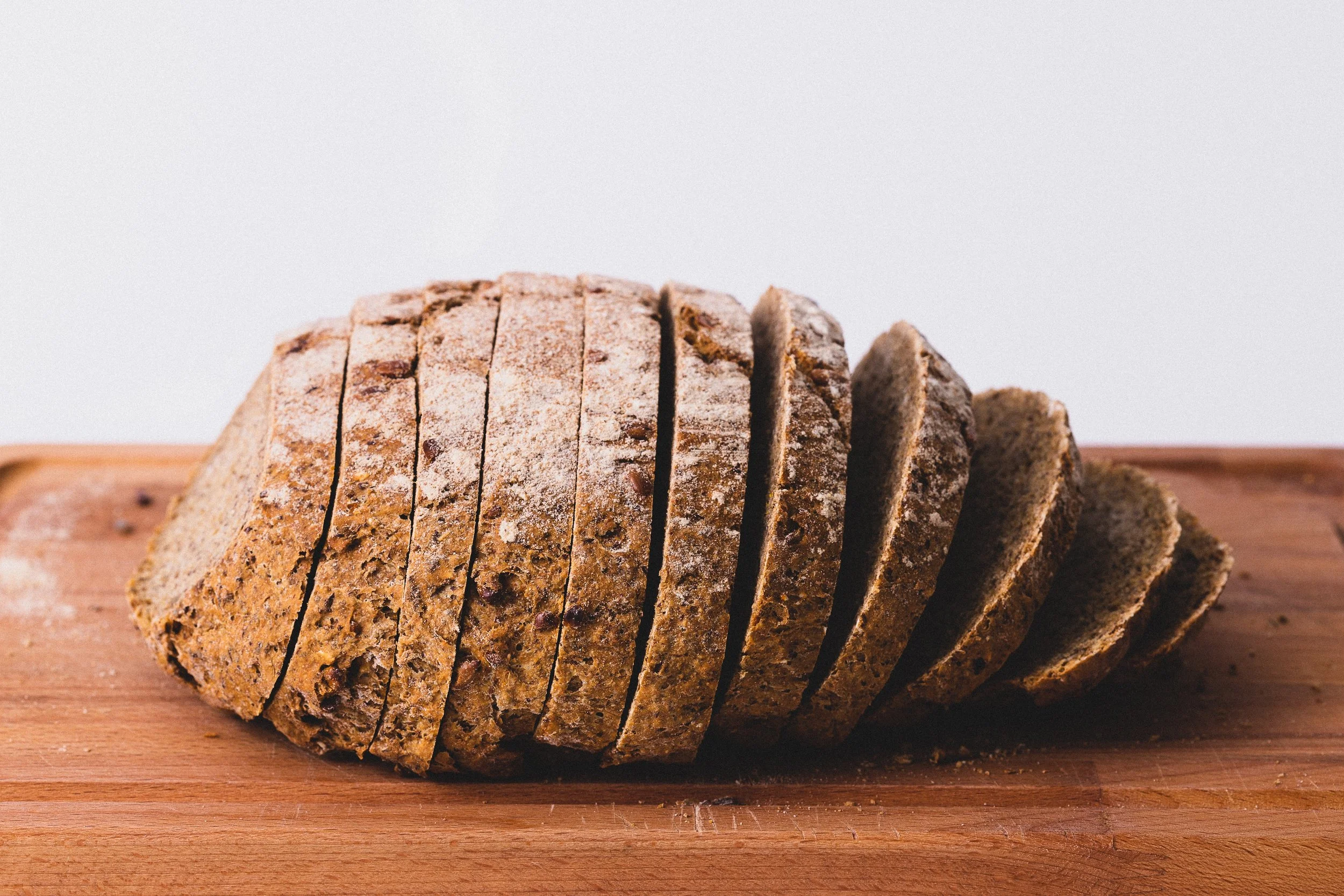different types of bread and their benefits!
there are so many different kinds of bread out there and we wanted to break down what each one means! remember, breads that use, simple, real, whole ingredients are what we’re looking for. just because it says “gluten free” does not mean it’s healthy. make sure to check the labels and see what’s really in there before making the purchase. as a note, the health benefits of different types of bread can vary based on their ingredients and preparation methods. so! here's a breakdown of some commonly consumed bread types and their potential health benefits:
white bread: white bread is made from refined wheat flour, which has been stripped of the bran and germ, resulting in a lighter texture and milder flavor. because of this, it is lower in fiber and nutrients compared to whole grain bread. it may provide quick energy due to its higher glycemic index but can lead to blood sugar spikes. choosing whole grain options is generally recommended for better nutrition.
whole wheat bread: whole wheat bread is made from whole grain wheat flour that includes the bran, germ, and endosperm; providing more fiber, vitamins, and minerals compared to white bread. the high fiber content helps promote healthy digestion, reduces the risk of constipation, and may help lower the risk of heart disease, obesity, and type 2 diabetes.
sourdough bread: sourdough bread is made using a natural fermentation process that involves wild yeast and lactic acid bacteria. this fermentation process can break down some of the gluten and phytic acid present in the grains, making sourdough bread potentially easier to digest for some individuals. it may also have a lower glycemic index compared to some other bread types, leading to a slower rise in blood sugar levels.
rye bread: rye bread, especially those made with whole grain rye flour, offers several health benefits. it tends to be denser and contains more fiber than wheat bread, which can help regulate blood sugar levels, improve digestion, and promote a feeling of fullness. rye bread also contains lignans, a type of plant compound that may have antioxidant and anti-cancer properties.
multigrain bread: multigrain bread typically contains a mixture of different grains like wheat, oats, barley, and seeds. while the term "multigrain" indicates the presence of multiple grains, it doesn't necessarily mean that all grains are whole grains. it's essential to read the label and choose varieties that contain whole grains to maximize the nutritional benefits.
when selecting bread for optimal health, consider choosing whole grain varieties whenever possible, as they contain more fiber, vitamins, and minerals. additionally, be mindful of portion sizes and the overall balance of your diet, as bread should be part of a well-rounded, nutritious eating plan.

